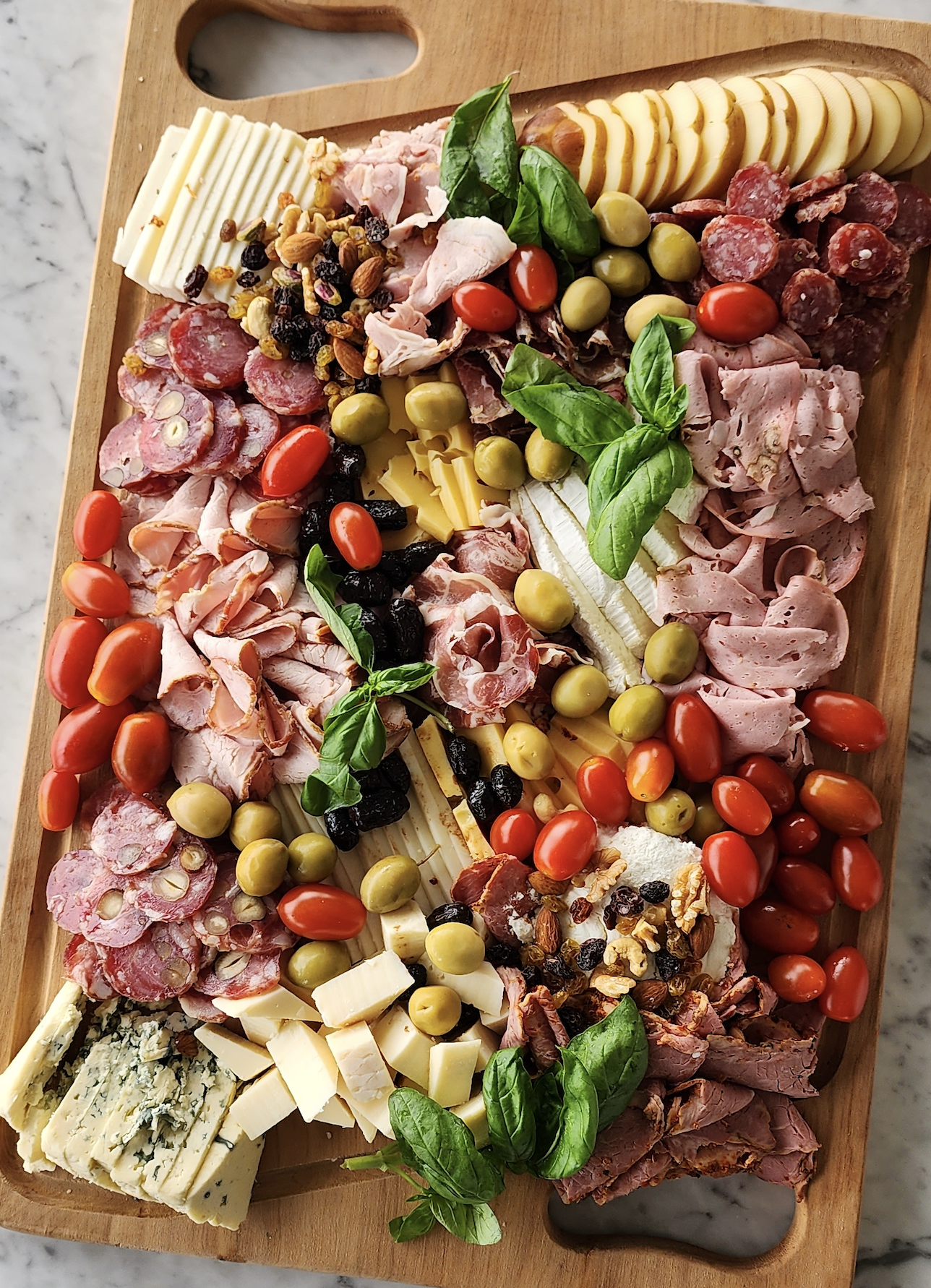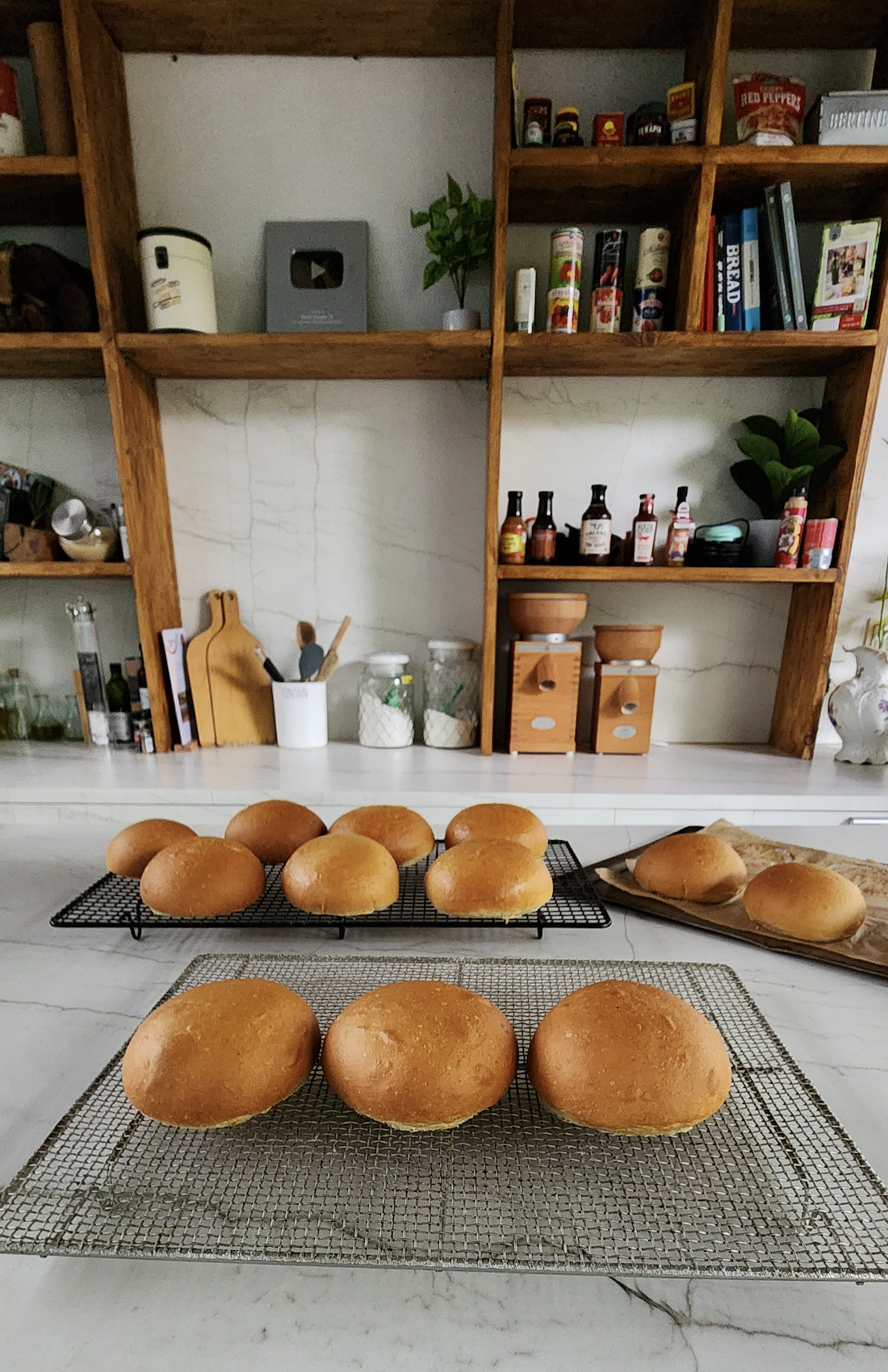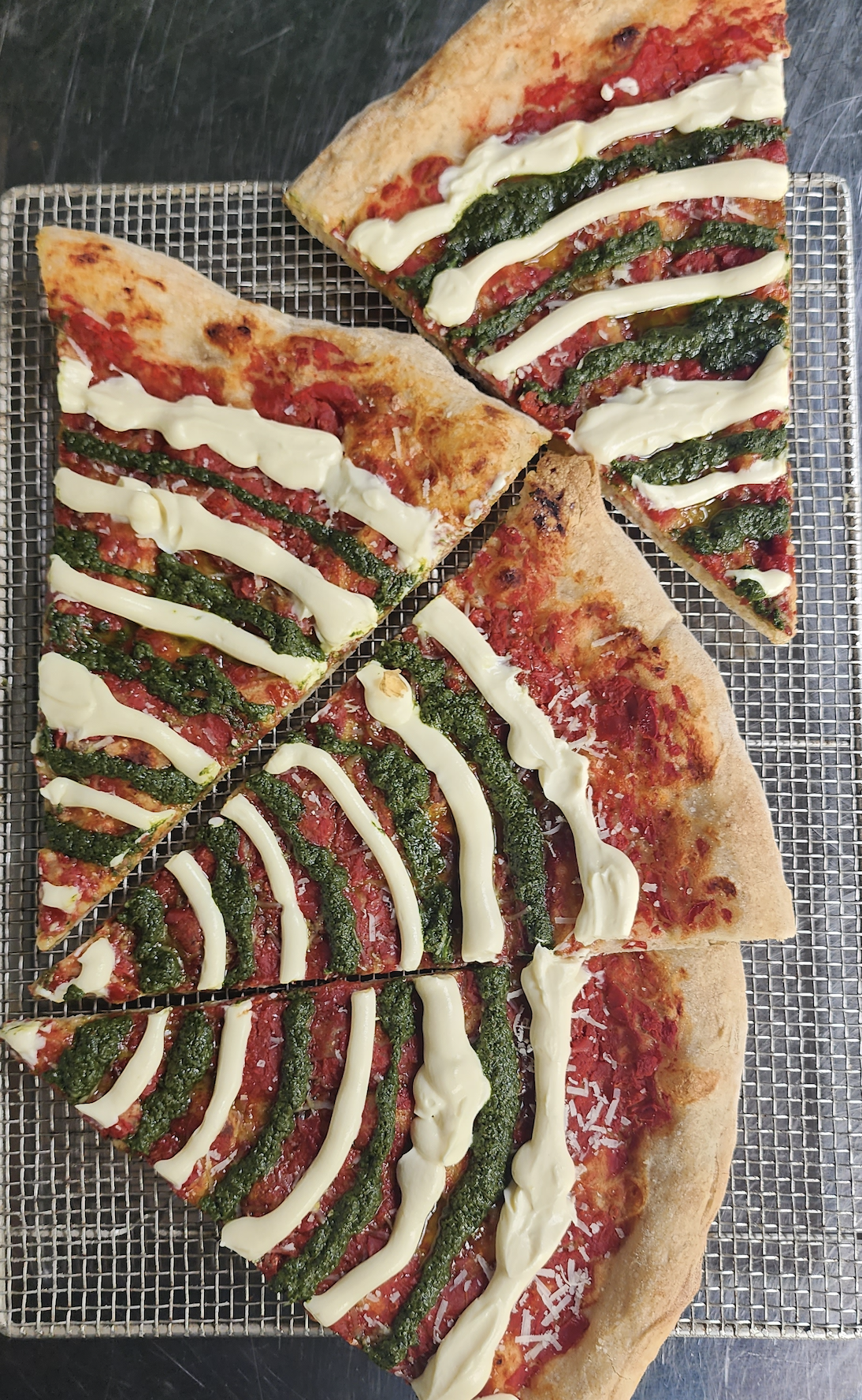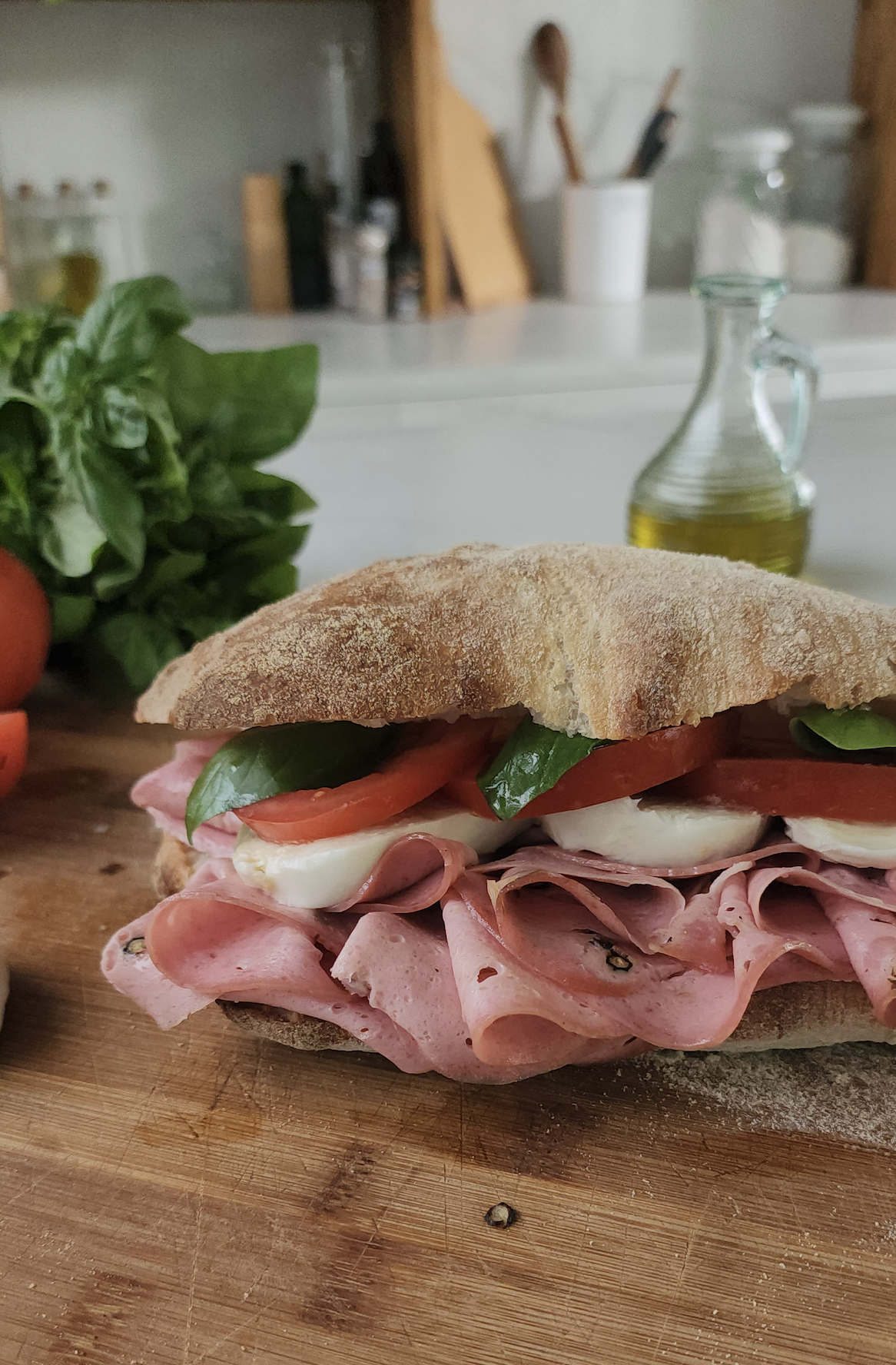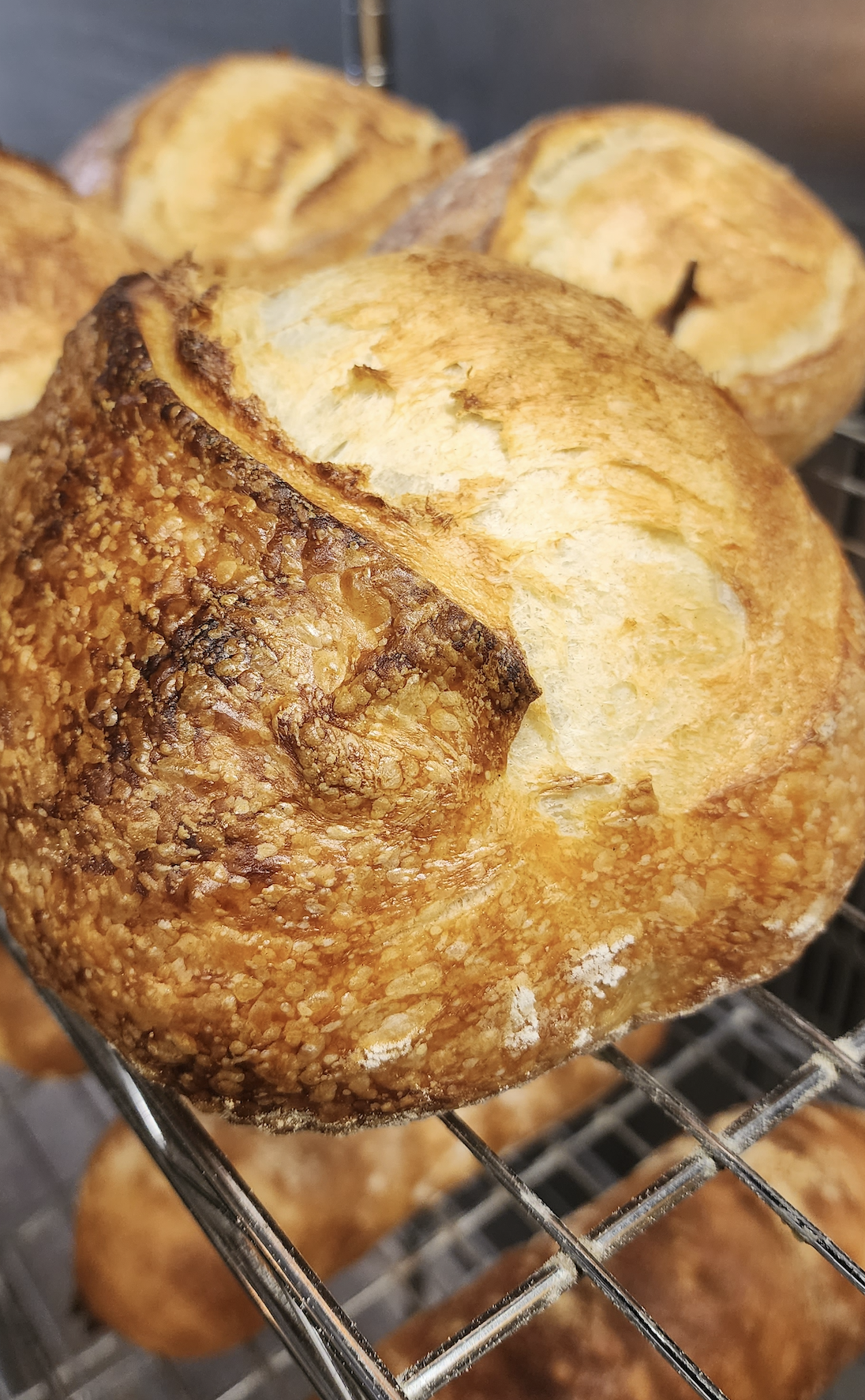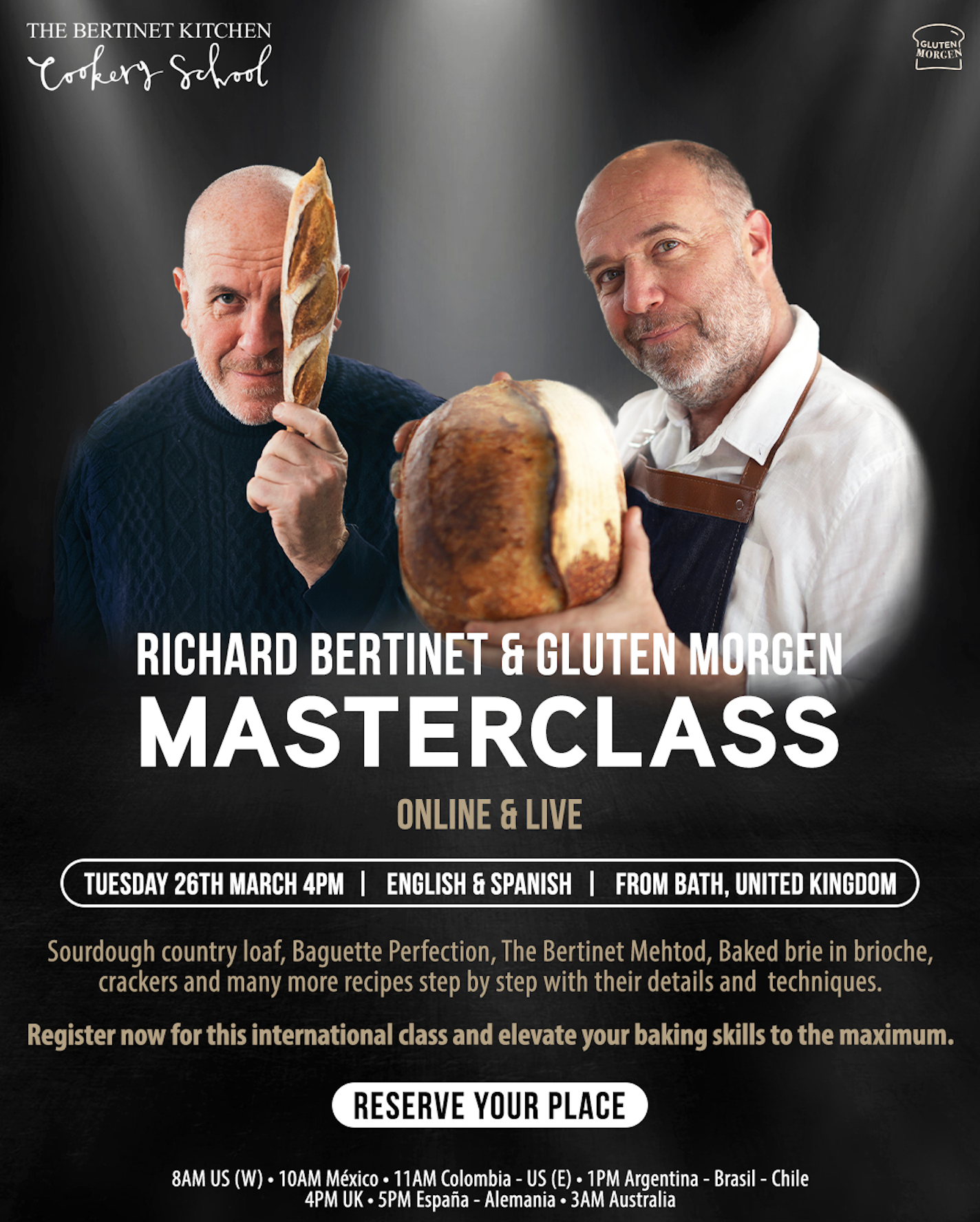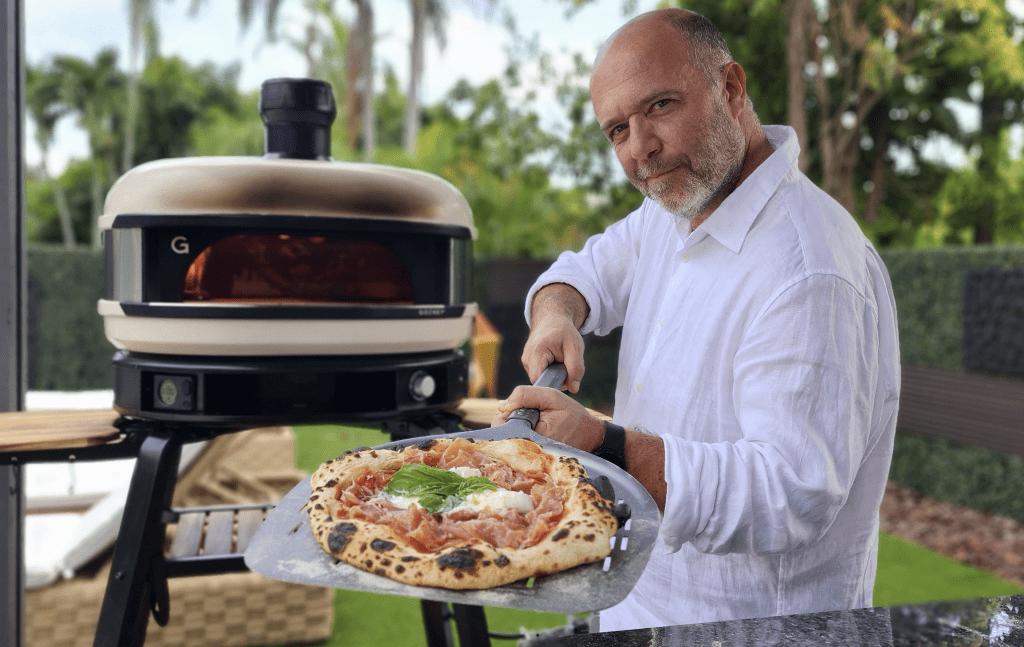Gracias a Ramon Garriga por participar en nuestra entrevista aquí en el sitio web y mercado de The Sourdough People, donde nos encanta destacar a panaderos y micropanaderías interesantes, únicos y divertidos de todo el mundo, para compartir la alegría de hornear que nos une a todos. Gracias al pueblo argentino por su amabilidad y calidez, y gracias por leer nuestro sitio web y brindarnos la oportunidad de compartir historias de masa madre con ustedes.
Welcome to The Sourdough People, where we celebrate the art and science of sourdough baking. In this exclusive interview, we sit down with Ramon Garriga, a sourdough legend hailing from Buenos Aires Argentina, now known to the online world as @Gluten.Morgen. Ramon’s journey from a music producer to a sourdough baker is as unique as it is inspiring. With a passion that started with a simple Spanish ham sandwich and blossomed into a full-fledged love affair with sourdough, Ramon has transformed his kitchen into a bakery and his Instagram into a treasure trove of sourdough delights. Follow him on Instagram to witness his sourdough adventures and get ready to dive into his story, tips, and the secret behind his famous simple sourdough recipe. Let’s break bread with Ramon and discover the magic of sourdough!
Please tell us where you’re from and a little about your background, Ramon?
I am from Buenos Aires, Argentina. My father is German, and my mother is Argentinian with a Spanish background. I don’t come from a baking background. My father was a lawyer, and my mother was a psychologist. They have nothing to do with baking or even cooking. I always say that I learned to cook by accident because I had to; my mother was always a terrible cook. I hope she doesn’t see this! I had to survive, so I taught myself how to cook when I was 18. Then we moved to Barcelona. My father moved from Germany to Argentina with his family when he was 14 and married my mother. However, his whole family then moved back to Europe, and he stayed to be with us but was always hoping that we could all move there one day. At 18 years old, we moved to Barcelona, but that only lasted 2 years because my mother wanted to go back to Argentina. I almost stayed in Barcelona, but I had so many friends in Buenos Aires, so I came back too.
What initially sparked your interest in sourdough baking, and how did you begin your journey?
When I left Barcelona, I brought back with me the bocata sandwich, a typical Spanish ham sandwich. Spain had a huge culture of sandwiches, which we just didn’t have in Argentina. It’s like a French baguette, and I fell in love with them. After university in Barcelona, my career was as a musician. I bought my first synthesizer or sampler, and from that moment, I started making electronic music in the nineties. An old friend from my school joined me, and we started making music. We had several dance hits around the world in Spain, Germany, and all over Europe, but the bread was always on my mind. I remember baking in those early days and always trying to bake with no knowledge at all. It was the same for music. I taught myself everything because I didn’t have music lessons, baking lessons, or cooking lessons. Watching videos, reading books, and always practising. That’s the secret of practising and not getting disappointed because when you practice, sometimes you fail. The music industry led to the production industry, and then I also entered the advertisement industry, all because of the music. I even built a recording studio in my home. Although now it’s my bakery here. Even when I was doing music, I always left to cook and bake.
Two French guys came to Buenos Aires many years ago and built a traditional French bakery here, and they were slow-fermentation bakers. They also had a TV program on one of these food networks, and I always watched their program about bread. I don’t know why there was one. Now I know why, but at that moment, I didn’t know why, and I started seeing them, and they always talked about the Masa Madre, which is the sourdough starter, and they always said, Masa Madre mattered with that French accent of theirs! And I wondered what is that. What is sourdough? So I went to Google it and found 5 days to build a sourdough. I thought forget it, it’s not for me, because I am very energetic and was not slow or patient. Energetic. Yes, energetic. I’m always very energetic, and I said, Sourdough, it’s not for me. So time went by, and then and next year, eventually, I decided I needed to try to build a starter, and I did, and it worked. The next step was learning how to make my first bread. I did quite well, and so then I started to research and learn more online, following bakers on Instagram and copying what they were doing. Every weekend I would be baking at home. My wife was really happy about that because I made a mess in the kitchen. She had everything perfect, and I took over our kitchen at night. I had flour, water, and dough everywhere. My weekends were always like this. And while I was at my studio, recording artists and mixing and producing, I always thought about the weekend. Soon it was not just weekends as I added Fridays and Mondays, and one day I found myself recording with a really important artist, and I was folding in the studio with the bowl. So it became a bit strange!
By now, I had an Instagram for my music, but it became more about the bread and less music. My Instagram name at the time was Cucamarcha, the name of one of my songs, which is La Cucamarcha. We made that dance music a long time ago, and it was a huge hit in Germany, France, Holland, and Europe, so it was my name in social media. Until one day in the building we were in, a publishing company friend asked why do you call yourself that on social media when it has nothing to do with bread and your account is now mostly bread. I went back to my studio to ponder, and all of a sudden, I said Gluten Morgen! I created my logo, and at the end of 2016, I became Gluten Morgen. I built a Facebook page and started posting everything on Instagram and there. Every time I shared a photo, I also shared the recipe, and people were so grateful for that, and it just kept on growing.
They then started asking me if I would teach, and I said, “I can’t teach – you should teach me. I have no idea; I’m not a teacher.” One day, I said, “Okay, yes, if you want it.” So I started being like a teacher. I don’t know what I was teaching at that moment. I started creating some workshops. I then found Mariana Koppman, who is a biochemist and was really well-known in the gastronomic scene. So we ended up together, and we started doing workshops together because she knew a lot about the chemical and scientific side of sourdough, and I had the practical side. We mixed together what we knew, and we started doing this, and it was a huge hit. We started making a lot of workshops about that, and then Penguin Random House asked us to write our first book, which is Masa Madre, the name Sourdough, and it’s now in its fifth or sixth edition, right now in Spanish only.
How has your approach to sourdough baking evolved since you first started?
I started with mostly pizza bread and comfort food, but now I am experimenting more with preferments including poolish, pâte fermentée, biga, as well as sourdough starter. I used to be pretty rigid about using only sourdough, but after years of baking and practice, what I want most is for the bread to taste good, be well-fermented, well-baked, and well-done. Preferments are going to be featured in my new book that I am writing soon. I will have poolish, biga, pâte fermentée, and sourdough in it. Pâte fermentée is old dough, so using a piece of the old bread to make the new bread. I saw that in Paris last year. We went to Paris to record with Apollonia Poilâne of Poilâne Artisanal Bakery. She is a very interesting woman and the head baker. So I now know there are many ways to make good bread, and although sourdough is my number one.
Do you have a signature sourdough recipe or technique that you’re particularly proud of? Can you share a bit about it?
Yes, I have one recipe that I always teach, but I’m not sure if I am proud of it. In my workshops around the world, I use just one recipe, and it is a really easy one that’s in our book: Simple Sourdough Bread. It has 90% bread flour and 10% whole wheat in baker’s percentage. If you don’t have whole wheat, you can use 100% bread flour. Then, there’s 70% hydration, which is high, but not too high. It’s higher than regular French bread, but for sourdough, it’s standard. Then there’s 20% sourdough starter and 2% salt. It’s just mixing, letting it do the autolyse, and then we do some stretching and folds and let it ferment. We shape it, and I introduced what now everybody knows: cold fermentation. At the beginning, this was strange for people. “How should I put my bread in the fridge? Why not in the oven?” But in the fridge, it works. And then the baking with the Dutch Oven or with the plastic oven bag. So that’s my simple recipe that I always teach, and what I tell them is that you can bake bread in different ways. You can not mix at all, or you can mix. You can use a kitchen aid, or maybe you can use a bigger mixing machine. But the result is always the same. If you start with an active and healthy sourdough starter and you give it time, which is the fourth ingredient, you end up with a good loaf. I tell them that the fourth ingredient is time, which is not only in bread but in everything: in wine, in beer, in cheese. If you give the right time to something, you get a good product out of it, and if you start cutting this ingredient of time, then you end up with a poor product.
Who are some of the people, brands, or companies in the sourdough industry that have inspired you?
My first two mentors were two French guys named Bruno Gillot and Olivier Hanocq, who opened L’Épi Boulangerie in Buenos Aires in 2007. They had their own TV show on elgourmet.com, and now we are friends. I find that so cool and so strange. In Spain, I have a few friends of mine now that I also am inspired by, like Daniel Jordà in Barcelona. Ivanya is another, but he’s not a baker; he’s like me, a communicator, a bread-baking communicator. There were also many Japanese bakers in the beginning that I saw on Instagram, but unfortunately, I don’t remember their names. Also, Richard Bertinet, who I am excited to be doing a workshop alongside. There are more, but I’m forgetting names. Trevor Wilson from the Open Crumb!
What are your must-have tools or favorite equipment for sourdough baking, and why?
You don’t need much to bake good sourdough, but one of my must-haves is my Dutch oven. I’ve been using many different kinds of ovens, but the results you get with the Dutch oven are perfect, whatever you do. I think it’s because we put that Dutch oven inside another oven, so the results are always consistent.
I also love my deck oven because home-style ovens are not that big. So when I got my first deck oven, I could bake baguettes. That’s what I needed to make full-size baguettes instead of small ones. The oven is beautiful, and I also like my pizza oven or wood-fired oven. I remember when my wife and I moved into our first home when we married, the first thing I did was build a wood-fired oven in the backyard, and the first thing I baked was bread. Back then, I had no idea, but it worked, and that must have been a sign of things to come. I also have my pizza ovens by Ooni and Gozney, which are good ovens.
I love all kinds of baking tools. Whenever and wherever I travel, I try to buy something for baking, even if it is in Ikea.
How do you source your ingredients, and do you have any specific preferences or tips regarding flour, water, or salt?
When I started travelling, I began buying flour of all kinds. My luggage would be full of flour packets from around the world. I always said, “Just one kilo of Italian flour.” Someone brought a few grains from Canada to Argentina and Patagonia years ago, so now we have fields of that. When I go to Patagonia, I bring those Red Fife grains home to mill and bake with.
Can you share a particularly challenging experience you’ve had with sourdough baking and how you overcame it?
I’m also into Panettone, and it is another thing that I like to bake. It’s complicated. It takes 3 or 4 days to make one panettone, and then you eat it in 5 seconds.
There is this new kind of contemporary panettone that I am trying, which is much lighter with big pockets. That’s the kind of panettone that I like to bake now.
I started baking Panettone with my friend, a baker and artist who is well-known and has won the best or second-best panettone in Spain, Daniel Jordà.
I met him before the pandemic, just a week or two before. We also did a workshop together in Barcelona because when I went to Barcelona in January 2020, we were friends from Instagram. I told Daniel that I was going to Barcelona with my family and suggested that maybe we could go to his bakery, and perhaps we could shoot a few videos or something together.
Daniel suggested we should do the workshop together, and I said no because I felt he should be teaching me. We did two workshops together, and they were fully packed. It was incredible. Then came the pandemic. We continued teaching workshops but online together. We did a few, and he was deeply into Panettone, and he said that I should bake Panettone too. I didn’t want to learn this stiff sourdough starter. I don’t know why I didn’t. Maybe one day I will. However, I suggested if we should do panettone courses together, then I should try to make my own panettone with a liquid sourdough starter. I started my own formula, developing this panettone with a liquid starter, and it worked. So we started making panettone workshops together. He did the stiff version, and I did my Gluten Morgen version. Now I’m into Panettone and doing my version, which really works. I don’t know what the Italians think about me baking this way, but it’s really tasty.
What do you enjoy most about baking sourdough, and how does it impact your daily life?
I still enjoy the joy that baking brings to me. I get excited if I know I have dough fermenting and waiting for me in the fridge to bake. The joy and anticipation are still strong for me after all these years. I think it’s the fascination I have with it all. I don’t want to lose that feeling I get every time I open my Dutch oven; I say, “Oh wow!” That really makes me happy every time.
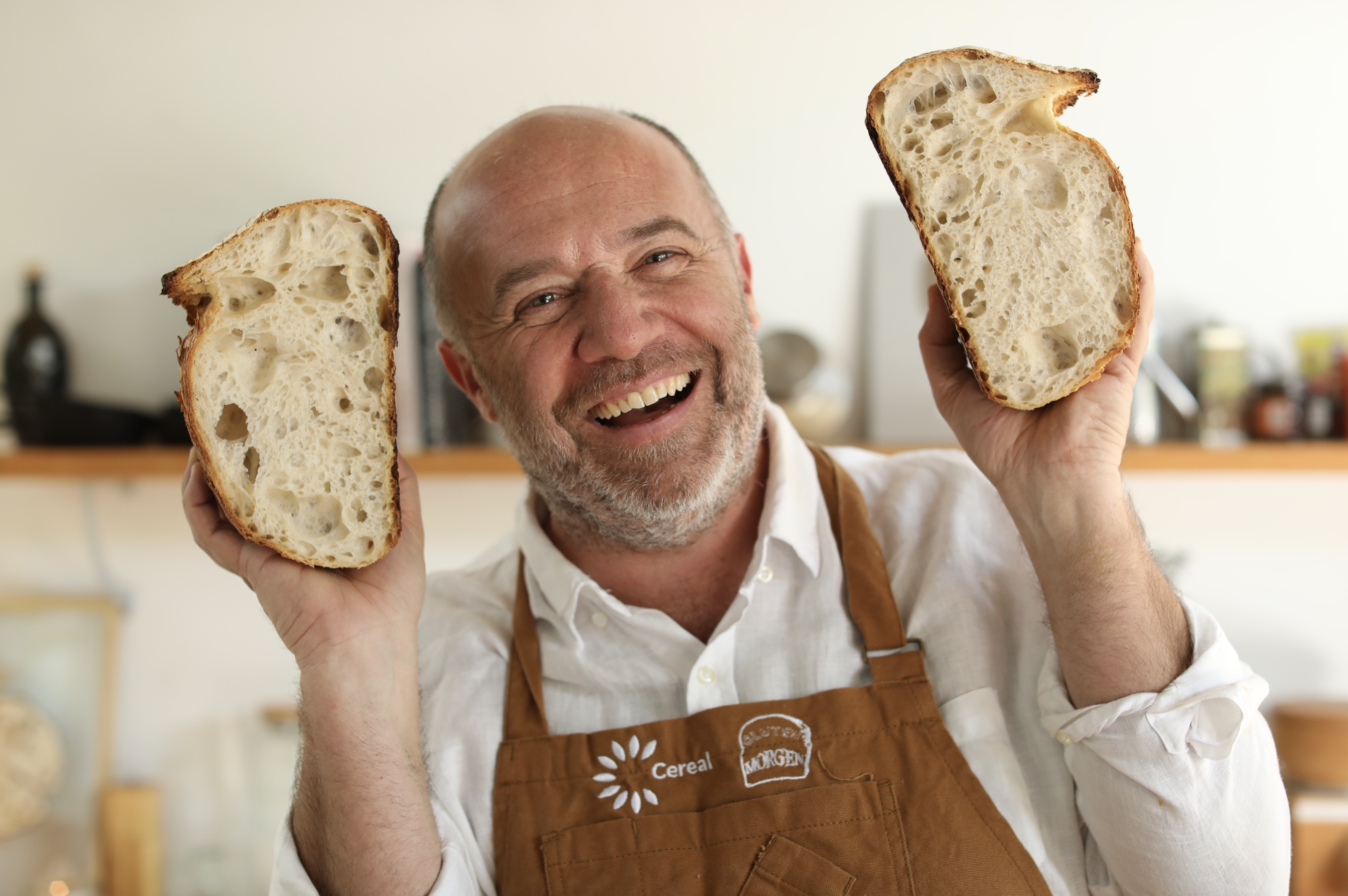
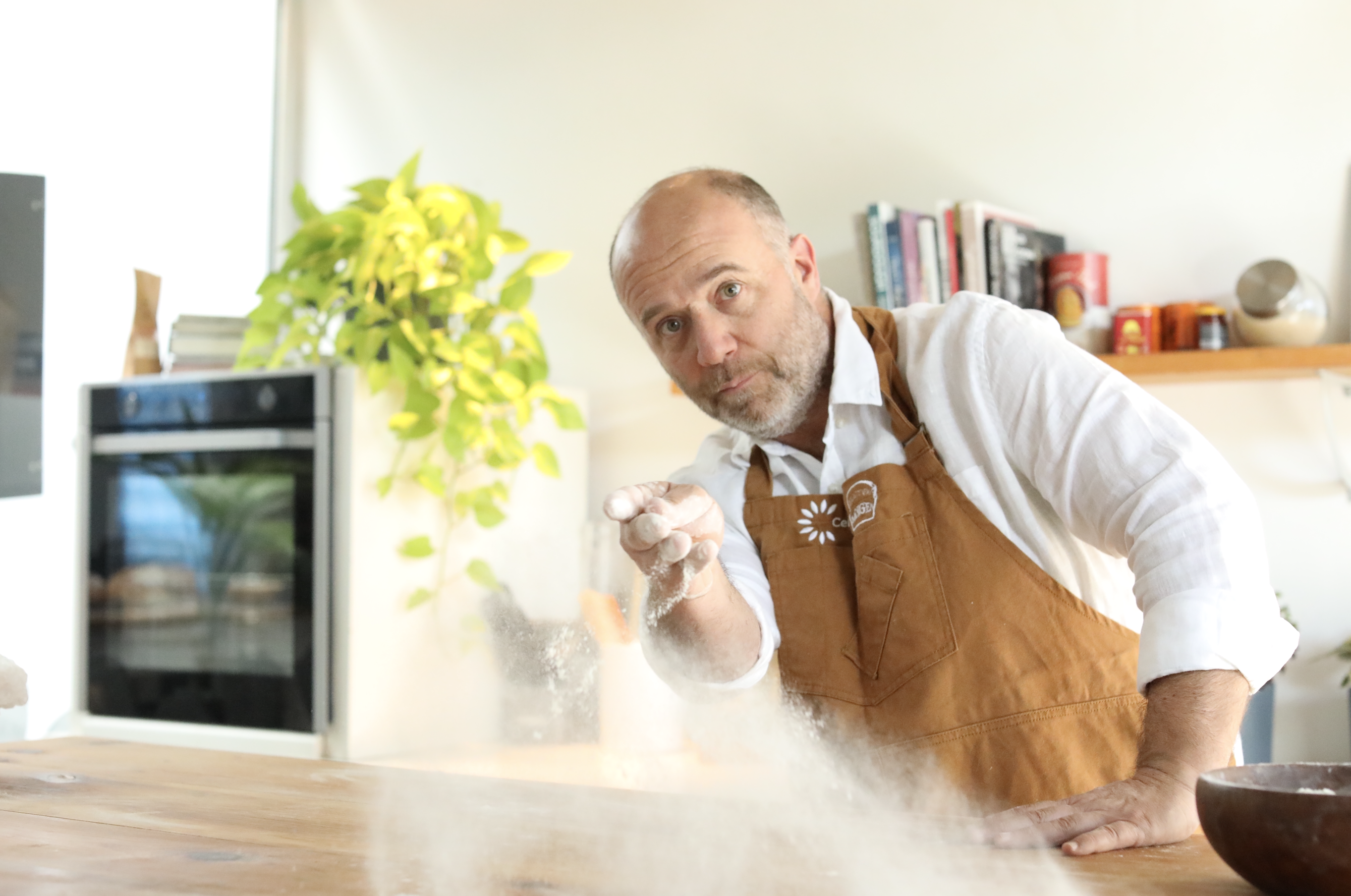
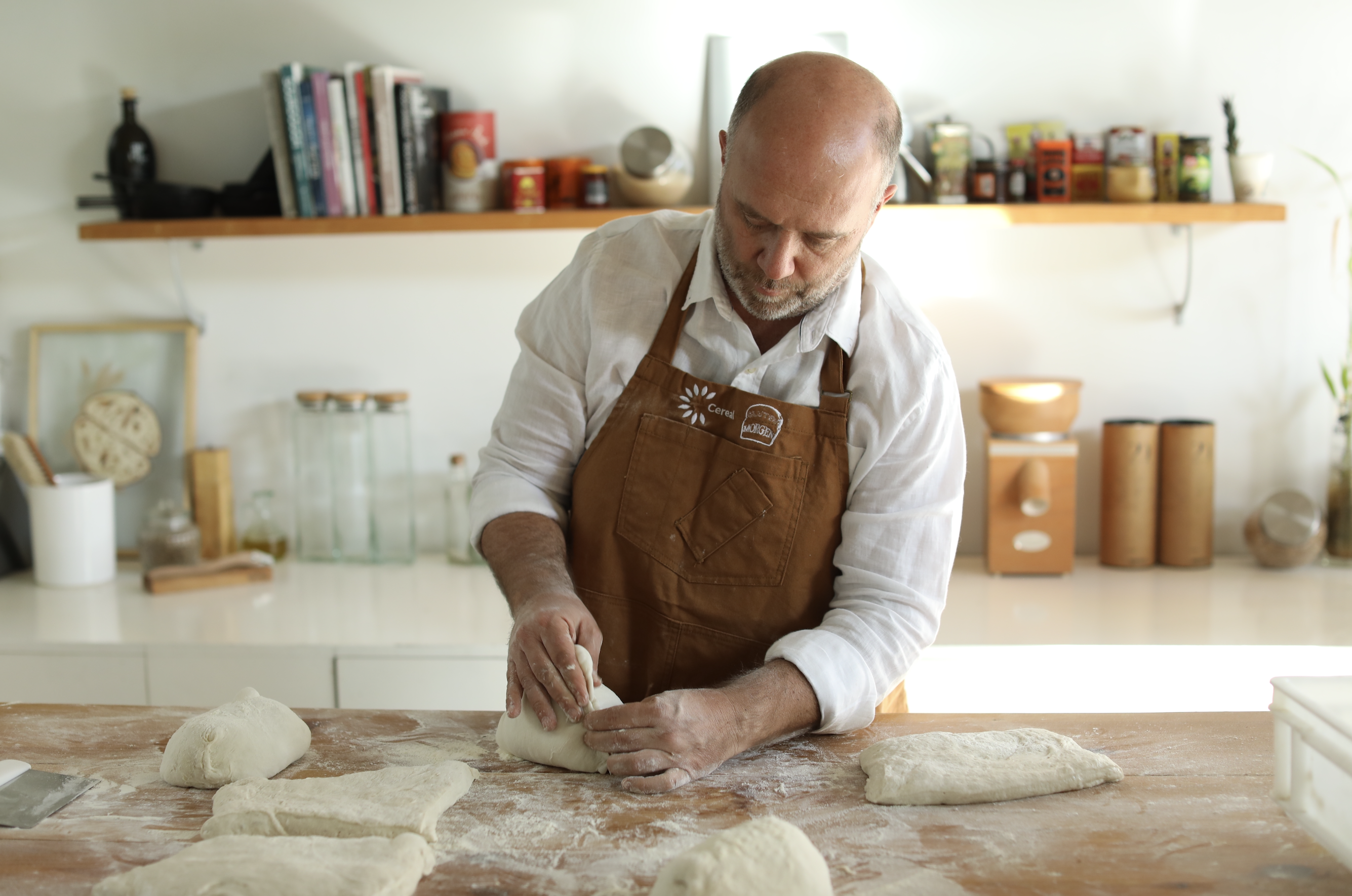
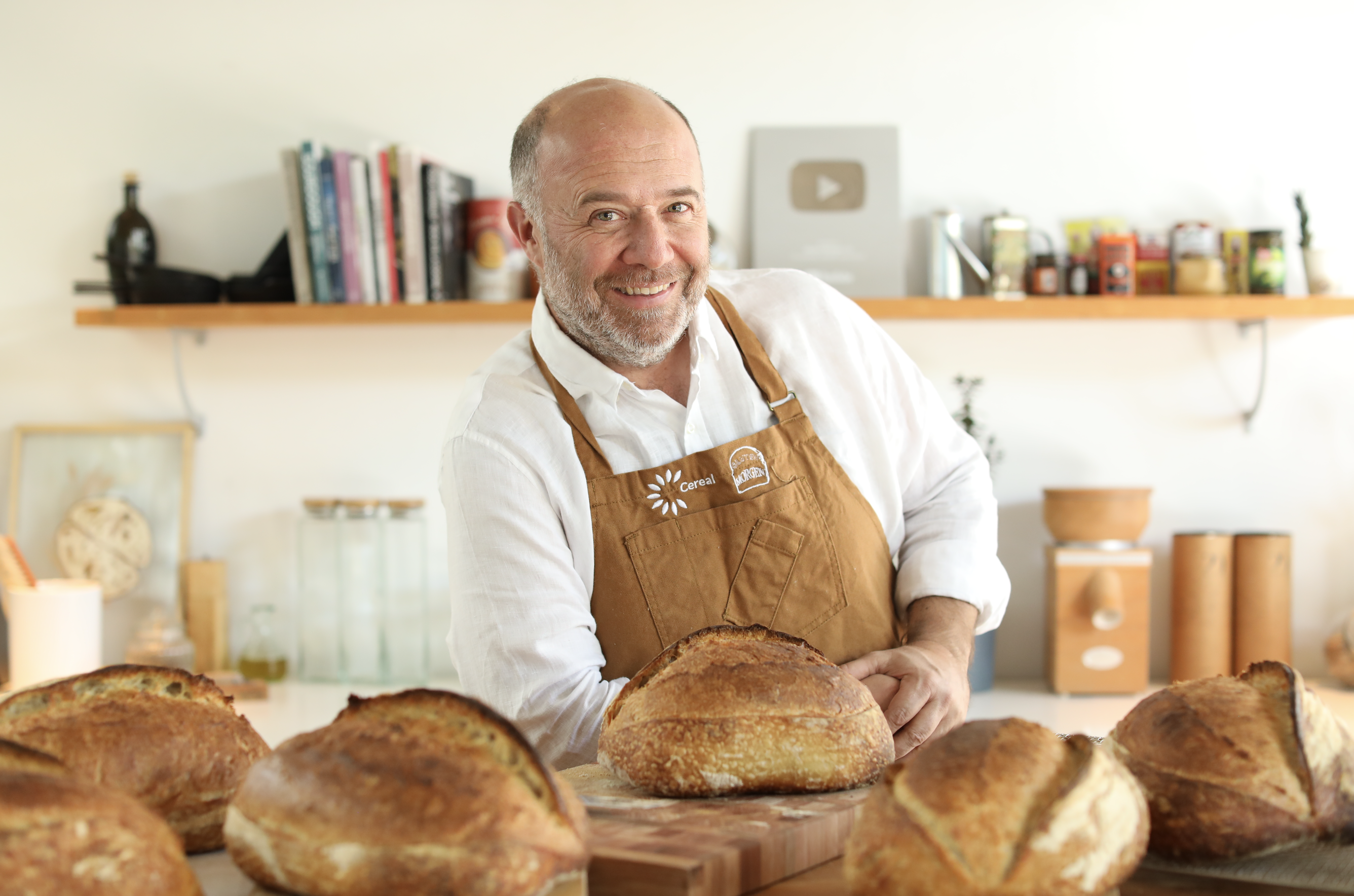
Have you noticed any new trends or innovations in sourdough baking recently?
I advocate the use of a baking bag to bake bread instead of a Dutch oven for those who perhaps don’t have a Dutch oven. It provides people with options. I also have a Brod and Taylor proofer that I can use in the baking studio, but not at home. There, I still rely on my own judgment to determine when it is ready.
What are some common misconceptions about sourdough baking that you’ve encountered, and how do you address them?
The idea is that it is difficult. It doesn’t need to be.
In your opinion, what is the most underrated aspect of sourdough baking?
The perception of sourness in sourdough bread is indeed a crucial aspect that can sometimes be overlooked. Achieving the right balance of tanginess in sourdough is an art, and there are ways to manage and control the level of sourness. Many people love sourdough, but for those who don’t, I think it’s often because they have tasted some bad bread. During the pandemic, many people were learning to bake and then selling their bread while still perfecting their skills. I didn’t like sourdough at first, and that was because I was making bad bread. Over time, I learned, and my bread got much better.
Are there any books, videos, or online resources you’d recommend to those wanting to learn more about sourdough baking?
Ha ha! Yes, mine. I have my book ‘Masa Madre,’ which is in its 5th or 6th edition in Spanish, which I co-wrote with my dear friend, Mariana Koppman. Also, check out my Instagram, my YouTube channels, which are available in English and Spanish. I also have masterclasses on Gluten Morgen TV.
Many of my baker friends are amazing too, like Richard Bertinet and Daniel Jordà.
What advice would you give to someone just starting out with sourdough baking?
Don’t give up—that’s the secret. I always hear or read from many home bakers, “I will never bake like you.” I always say, why can’t you do it if I was able to do it? You can do it, too. So don’t get disappointed and keep on baking. And don’t overthink it. That’s the secret. Don’t think, just bake.
How do you engage with your followers and the sourdough community on social media? What’s your style?
My style is always to provide a recipe to my community. There’s a recipe behind everything. It’s not just about showing off. This is my brand, and I want my followers to discover how I did it, and I will always share. I will also always tell the truth or try to present it in a better way if possible. I also share all of my teachings for free on our YouTube TV channel. I always answer people’s questions or create videos to address the questions that I receive.
I always try to be myself. So, I am myself in all my videos too, and I always try to mix in a little fun or craziness, which is me on the outside and how I appear on social media. I also try to show that the cooking part should be elegant, well-executed, well-filmed, and serious at times, but I always like to add some comedy because that is a part of my personality, and baking should be fun.
Have you participated in any collaborations or community events related to sourdough baking, and what was your experience?
One of the really interesting things we did was a Sourdough Marathon. One time, a few years ago, many bakers and I were baking for about 9 hours together, but in our own kitchens. Also, during the pandemic, I did an interesting video with Richard Bertinet and many other bakers. We made a video passing bread from one person to another. It wasn’t always the same bread because we were isolated. We passed bread all around the fun bread community. You can find it on my Instagram.
What’s your favorite sourdough recipe to bake for yourself, friends, or your loved ones?
When I travel and don’t have a scale, I make the 3, 2, 1 recipe, which is something I always do. It’s 3 cups of flour, 2 cups of water, 1 cup of sourdough starter, and salt to taste. You can use any measure you have on hand, like cups, plates, or bowls. I did this in Italy last week when I traveled there with my family. After mixing everything, let it rest for 1 or 2 hours, then shape it and let it rest again. You can bake it on the same day or opt for cold fermentation and bake it the next day. It works well.
Do you have any tips or suggestions on how to manage a healthy sourdough starter culture?
I always say I do it by eye, which is kind of strange, mostly because people from Europe, I have found, don’t understand why I do it that way. I think it is what makes most people afraid, so they use measures or caps, or whatever, because they have to know, one spoon of water, one spoon or 100 grams, and all the ratios, 1:1, 2:2, 1:5, 1:4. I say don’t worry because you can trust yourself and just do it by eye, and that’s my secret.
Add a few spoons of flour and a little bit of water, then mix it and try to reach a creamy texture. Then give it some heat and put it in your kitchen, or wherever, and let it grow slowly. Keep it a little bit lower than 100% hydration. That is how I’ve been teaching how to make a sourdough starter this way. Of course, you can do it by measures if you want to.
And don’t be afraid.
Do you have any upcoming projects or plans related to sourdough baking that you’re excited about?
Well, the first one is this master class with Richard Bertinet, which will be online. I will be speaking Spanish, and he will be speaking English at the end of March.
Additionally, I am working on a new book and creating new videos. I have numerous other projects in the pipeline, such as traveling abroad and producing more content for Gluten Morgen TV on YouTube. I am also collaborating with some restaurants to develop new recipes, with a particular focus on Italian specialties like pizzas and focaccia. Moreover, I am in the process of writing another book, which is scheduled for release either this year or the next, amidst all my other activities.
What do you hope to contribute or be remembered for most in the sourdough community?
By encouraging others to trust themselves, I always suggest doing it by sight. I emphasize focusing on the creamy texture of the sourdough starter, not on how much flour or water you put in.
And I always sign off by saying, “Gluten Morgen, everyone!”
Can you describe a moment when you felt particularly proud or fulfilled in your sourdough baking journey?
So many moments but in particular the fact that I always have done what I like to do in life and in my journey with sourdough.
If you could give one piece of advice to your past self when you started sourdough baking, what would it be?
Do what you want to do, because that’s what I always do. Do what you like to do. That is that.
Is there anything else you would like the community to know about you or things you would like the readers to potentially purchase or subscribe to?
Our YouTube channel offers a wealth of content in both English and Spanish, including classes, recipes, and how-to guides. Additionally, we have developed the Gluten Morgen sourdough calculator app, available in both languages, which serves as an invaluable tool for sourdough baking. You can download it for free on both iPhone and Android devices. Furthermore, I will be hosting an online workshop in March alongside Richard Bertinet, which will be a master class conducted in both Spanish and English. For more information and to book your spot in the online course with Bertinet, visit our website or directly access the registration page.
Closing Thoughts
Thank you for joining us in this fascinating conversation with Ramon, aka @Gluten.Morgen. We hope his journey and insights have inspired you to explore the world of sourdough baking further. Don’t forget to follow Ramon on Instagram to keep up with his latest creations and adventures in sourdough. We also invite you to join The Sourdough People’s email newsletter for more inspiring stories, tips, and recipes from the sourdough community. Follow us on Instagram at @sourdoughbread.ca and if you have interesting story ideas or topics you’d like us to feature on our website, please use the intake form to share them with us.
Happy baking, and may your sourdough always rise to the occasion!
